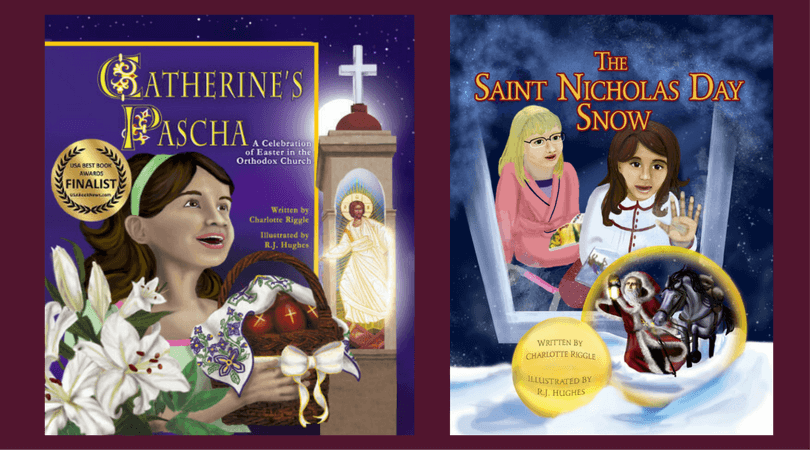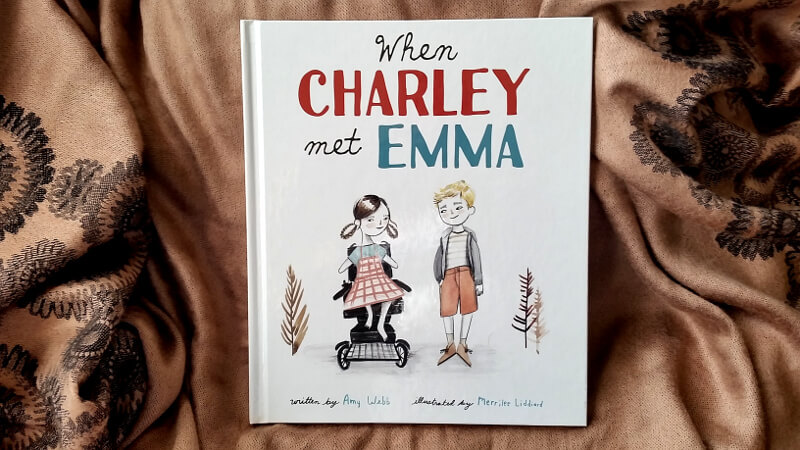It took me a while to figure out why I like When Charley Met Emma so much. At first glance, it’s everything I don’t like in a picture book. But I love it! Seriously. It’s a delightful book.
It took me a long while to figure out why it’s so delightful. Let’s start with two things that would ordinarily move a book straight to my “nope” pile.
First, the book is didactic. It tells you what to think, what to do, and what not to do. It tells you what’s right and what’s wrong and why. And I am not a fan of didactic picture books. They strike me as disrespectful and patronizing. Just tell the story, okay? And trust the reader to figure out the right and the wrong and the why of it.
But When Charley Met Emma isn’t patronizing. It works.
Second, the illustrations by Merrilee Liddiard don’t carry any part of the story. They depict what the words say. That’s it. As a result, When Charley Met Emma isn’t really a picture book, in the full sense. It’s just an illustrated story. There’s no interplay between the text and the art. They don’t interact with each other. The illustrations don’t add anything that’s not in the text.
And I’ll be completely honest. I don’t care a lot for the style. The pictures feel slightly old-fashioned, with a muted range of colors.
A social story about disability
I finally figured out what makes When Charley Met Emma work. It’s not a regular picture book. It’s a social story, like the ones that I used to write for my kids with autism. (To be clear, I never took the training to write officially sanctioned Carol Gray Social Stories. A real Social Story has to meet specific criteria. When Charley Met Emma doesn’t meet all the criteria, and I’m sure the ones I wrote for my kids didn’t, either. But they were helpful nonetheless.)
A social story is used to teach autistic kids how to handle social situations that they’ve never encountered before, or that are uncomfortable for them. They’re used for other things, too, of course. But it’s the use for unfamiliar and uncomfortable situations that is important here. Social stories are factual, clear, and reassuring. They help the child understand how the situation might look to someone else. And they suggest a positive way to respond to the situation.
That’s exactly what When Charley Met Emma does.
What’s the story?
When Charley Met Emma is about a little boy named Charley. He’s a pretty typical boy, but he likes having quiet time to draw more than most kids do. So he sometimes feels different. His mom reassures him that different isn’t weird, sad, bad, or strange. It’s just different. And different is OK.
Then Charley meets Emma at the playground. Emma doesn’t have any hands, and she gets around in a motorized wheelchair. Emma’s differences make Charley uncomfortable. He wonders if she’s too different to be OK. He forgets to whisper when he asks his mom why Emma looks weird. Then he feels really bad when he realizes that he made her sad.
Charley’s mom and Emma’s older sister Chloe help the children start talking to each other. They coach them on how to interact. And by the end of the day, Charley and Emma are friends.
It’s simple, but not simplistic. It works.
Even the illustrations work when you see the book as a social story. The story is meant to be reassuring. It’s meant to help a child understand something that’s hard to figure out. The clear words and calm pictures don’t add to each other. Rather, they reinforce each other. They allow a child more comfort as they work through something uncomfortable.
Why When Charley Met Emma is important
I’d love to see all young children read When Charley Met Emma. (I’m not sure that neurotypical children over, say, 8 or 9 years old would appreciate When Charley Met Emma, although they might.)
Many young children have never met a person with a significant disability, and they rarely see disabled people in picture books, either. As a result, the first time they meet someone with a disability, they are uncomfortable. They don’t know what to do. They say the wrong thing. Just like Charley in the book.
When children see people with disabilities in picture books, they are far less likely to feel uncomfortable or frightened when they meet a disabled person in real life. That’s a good thing.
And When Charley Met Emma does more than just introduce a character with a disability. It describes positive ways to interact with a disabled person. It tells a child what to do, and what not to do when they meet a person with a disability.
Author Amy Webb also includes some helpful information from parents in the back. She is a special needs mom herself, which, I think, gives the story its power.
Read More
The best picture books with disabled characters: In this post, you’ll find several more books that include characters who use wheelchairs.
Welcoming everyone to church: Disability and special needs: It’s not just children who struggle with welcoming everyone, regardless of how they might look.
Loving an autistic child at church: The only thing you need to welcome autistic children (or adults) to your parish is love.
Buy the Books!

These delightful books will diversify your bookshelves with disability representation. Elizabeth, one of the main characters, is an ambulatory wheelchair user.
Catherine’s Pascha
FINALIST IN THE 2015 USA BEST BOOK AWARDS
Catherine doesn’t like vegetables. She doesn’t like naps. She doesn’t like it when her mom combs her hair. She loves hot dogs, chocolate cake, and her best friend, Elizabeth. Most of all, she loves Pascha! Pascha, the Orthodox Christian Easter, is celebrated in the middle of the night, with processions and candles and bells and singing. And Catherine insists that she’s not a bit sleepy.
Celebrate the joy of Pascha through the magic of a book: Catherine’s Pascha. Available on Amazon, Bookshop.org, and my webstore.
The Saint Nicholas Day Snow
Shoes or stockings? Horse or sleigh? Does St. Nicholas visit on December 6 or on Christmas Eve? Will a little girl’s prayer be answered? When Elizabeth has to stay at Catherine’s house, she’s worried about her grandmother, and worried that St. Nicholas won’t find her. The grownups, though, are worried about snow.
Celebrate the wonder of St. Nicholas Day through the magic of a book: The Saint Nicholas Day Snow. Available on Amazon, Bookshop.org, or my webstore.



